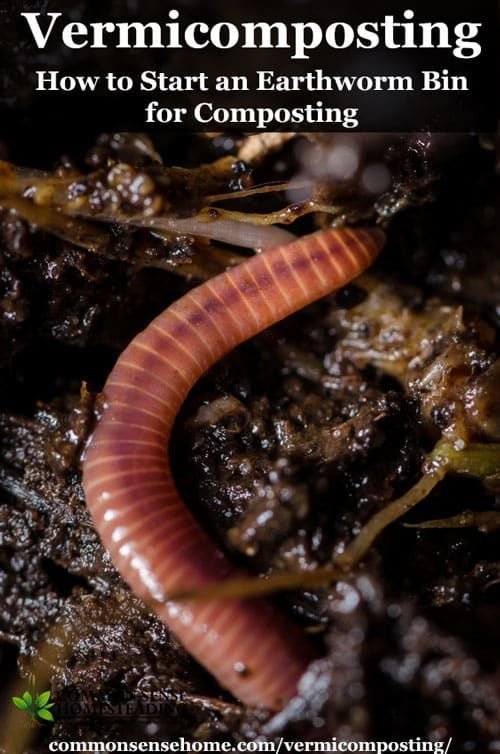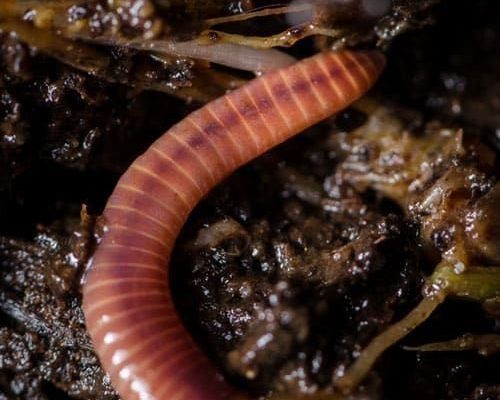
So, what’s the deal with vermicomposting? Well, it’s the process of using earthworms to decompose organic waste, like kitchen scraps and yard debris, by turning them into nutrient-rich worm castings. This is a fantastic way to reduce waste and create a natural fertilizer for your plants. In this article, we’ll explore the top five earthworm species you can use for vermicomposting, so you can pick the perfect one for your composting adventure!
1. Red Wigglers (Eisenia fetida)
Let’s kick things off with the star of the vermicomposting world: the **Red Wiggler**. You might have seen them wriggling around in a compost bin or a worm farm. Red Wigglers thrive on decomposing organic matter. They love to munch on kitchen scraps like fruit peels, coffee grounds, and even shredded newspaper.
These little guys are not just any old worms; they’re excellent composters. They can consume *up to half their body weight in food every day*! This means you’ll get plenty of rich compost in a short amount of time. Plus, Red Wigglers are pretty resilient. They can handle varying temperatures, but they thrive best between 55°F and 77°F. So, they’re perfect for indoor and outdoor composting.
Why Choose Red Wigglers?
Here’s the thing: Red Wigglers are incredibly easy to care for. You don’t need a fancy setup; a simple bin with the right bedding will do. They reproduce quickly, so your population can grow fast if you maintain proper conditions. Plus, their castings are nutrient-dense, making them perfect for giving your plants a boost!
2. European Nightcrawlers (Eisenia hortensis)
Next up, we have the **European Nightcrawler**. These guys are a bit bigger than Red Wigglers and are often found in garden soils. European Nightcrawlers are great for both composting and soil aeration. They tend to prefer a bit cooler climate—around 60°F to 70°F is ideal for them.
One of the best parts about using European Nightcrawlers is their impressive appetite. They can eat a variety of organic materials, including more fibrous options. Their larger size means they can break down tougher materials, such as cardboard and dried leaves, which is an excellent benefit for your compost bin.
Why Choose European Nightcrawlers?
If you have a larger composting system, these worms can be a fantastic addition. They can tolerate a wider range of conditions and can handle larger quantities of waste, making them perfect for those who generate more compostable materials. Their castings are just as rich and beneficial as those of Red Wigglers.
3. African Nightcrawlers (Eudrilus eugeniae)
The **African Nightcrawler** is another impressive contender in the world of vermicomposting. They’re known for their size—larger than both Red Wigglers and European Nightcrawlers. African Nightcrawlers prefer warmer temperatures, so if you live in a warmer climate, they’re a great choice. They thrive between 75°F and 85°F.
These worms are also voracious eaters, enjoying almost all types of organic waste. They’re particularly fond of food scraps, which makes them ideal for indoor composting. Plus, they break down organic matter quickly thanks to their size and appetite!
Why Choose African Nightcrawlers?
If you want faster results, African Nightcrawlers might be just what you need. They can significantly speed up the vermicomposting process, giving you rich compost in a short time. However, they may require a bit more care regarding temperature and moisture levels.
4. Red Worms (Lumbricus rubellus)
**Red Worms** aren’t as commonly used in vermicomposting as their Red Wiggler cousins, but they’re still a solid choice. They’re known for their ability to thrive in cooler conditions, making them a good option for outdoor composting in temperate regions.
These worms will break down a wide range of organic materials, including fruit and vegetable scraps. They’re great at aerating soil as they tunnel through it. They tend to stay closer to the surface, which helps with aeration and composting efficiency.
Why Choose Red Worms?
If you live in a cooler climate or want to integrate them into your garden soil, Red Worms can be beneficial for you. Their ability to handle cooler temperatures means they can provide excellent composting even when other worms might struggle.
5. Blue Worms (Perionyx excavatus)
Last but not least, we have the **Blue Worm**. These are often overlooked in the vermicomposting world but should not be underestimated. Blue Worms are fantastic composters and thrive in tropical and subtropical climates. They can tolerate warmer temperatures and are known for their ability to break down organic waste efficiently.
One intriguing aspect of Blue Worms is that they can live in more acidic conditions compared to other species. This makes them adaptable to various composting environments. They particularly enjoy decomposing materials like kitchen scraps and can help create high-quality worm castings.
Why Choose Blue Worms?
If you’re in a warmer area, Blue Worms can be a game-changer for your composting efforts. Their adaptability to different conditions can offer you flexibility, especially if you’re experimenting with various composting materials.
Choosing the right earthworm species for your vermicomposting project can elevate your gardening game. Each of the species we’ve discussed—**Red Wigglers, European Nightcrawlers, African Nightcrawlers, Red Worms, and Blue Worms**—brings its unique strengths to the table. Whether you want rapid composting, adaptability to temperature, or robust waste consumption, there’s an earthworm for you.
So, as you dig into your composting journey, remember: these little champions are doing the hard work of turning your scraps into something amazing for your garden. Embrace the magic of vermicomposting, and let your earthworms help nurture your plants, all while reducing waste. Happy composting!

